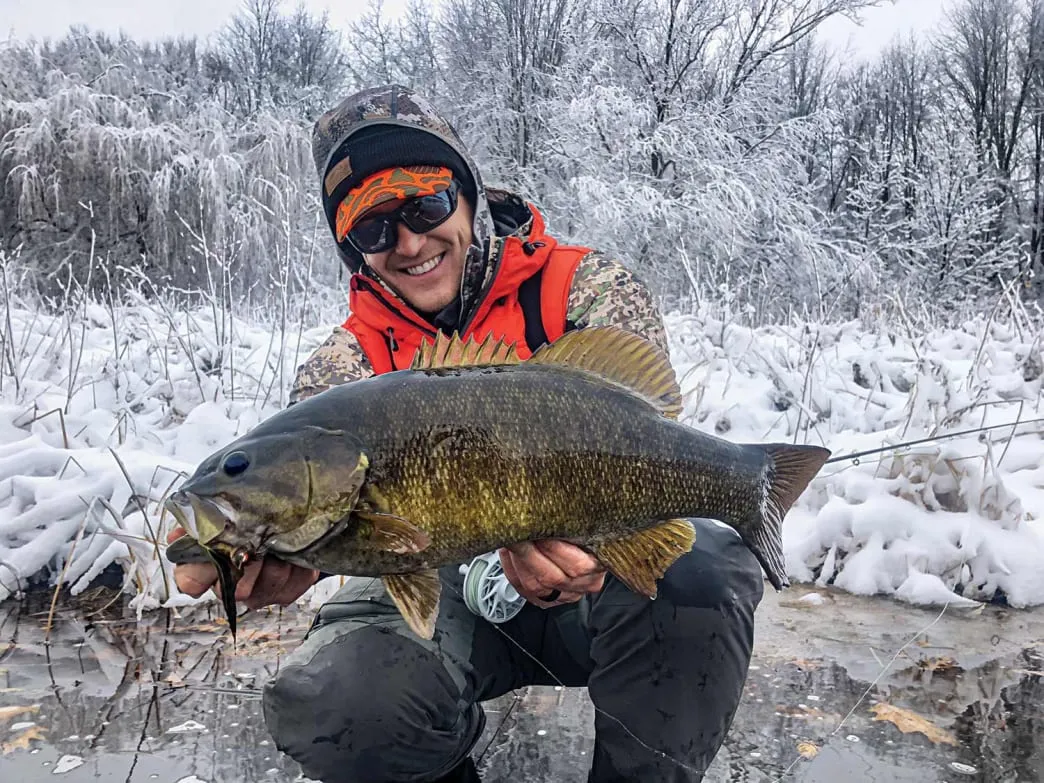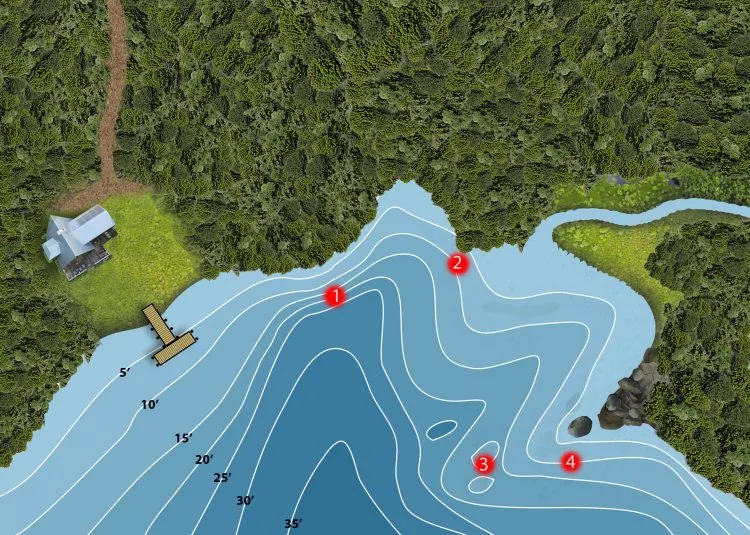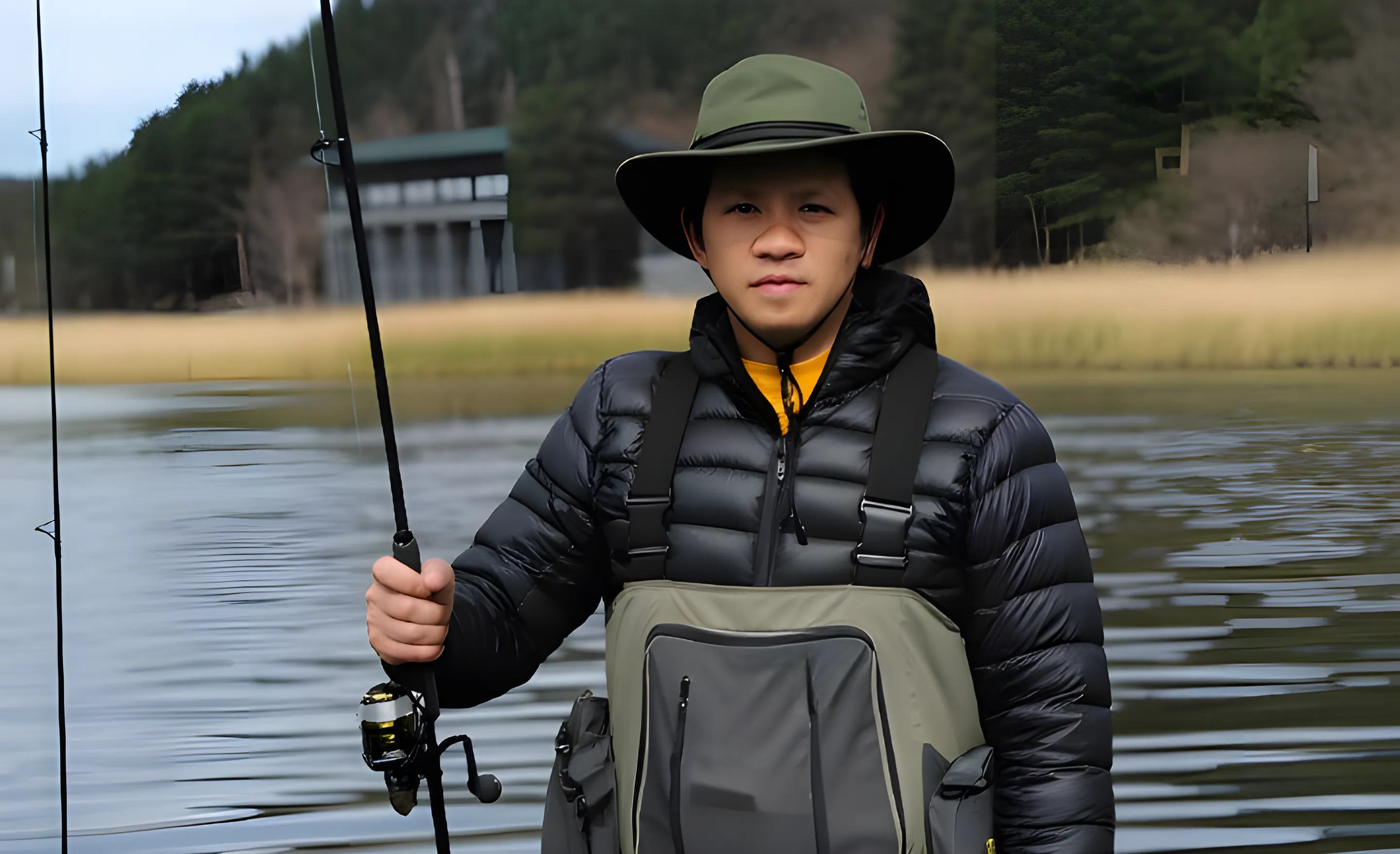Fishing Bass in the Winter: Your Complete Guide to Lures, Locations & Pro Techniques

The world of bass fishing doesn't have to go into hibernation when the temperature drops. While it might sound tough, with the right approach, fishing bass in the winter is one of the most rewarding times to be on the water. I’ve spent years chasing sluggish cold-water bass across frozen coves and rocky drop-offs, and I’ve learned exactly what works. In this guide, I’ll walk you through how bass behave in winter, my go-to lures, proven techniques, the best spots to fish, and how to adapt based on your region. For more seasonal tips and gear insights, check out our complete Gear Guide section at riversiderelics.com.
✅ Upgraded Winter Bass Fishing Checklist
-
Line: 6-8 lb fluorocarbon for sensitivity and invisibility.
-
Location: Target deep structure (15–40 ft) like ledges, points, and brush piles.
-
Lures: Finesse baits (Ned rigs, drop shots) and reaction baits (blade baits, suspending jerkbaits).
-
Colors: Natural shades (green pumpkin, shad) for clear water; subtle brights (chartreuse tip) for stained water.
-
Retrieve: Go painfully slow. Use long pauses—count to 10, or even 20.
-
Timing: Fish stable or warming weather trends, focusing on sunny afternoons.
-
Electronics: Trust your sonar. If you don't mark baitfish or bass, keep moving.
Why Winter Bass Fishing Works
At first glance, it might seem like a lost cause. But after years of testing the waters, I can confidently say that this season has a quiet power. In fact, some of my biggest catches have come when most anglers had already packed up their bass fishing gear for the season.

The key is understanding bass behavior. In winter, their metabolism plummets, so they conserve energy and become less aggressive. They won’t chase, but they will eat. They suspend in deeper, more stable water near structures like ledges and submerged brush. My approach is to slow everything down: slower retrieves, lighter gear, and finesse presentations that mimic dying baitfish or craws. Another advantage is the reduced fishing pressure. With fewer boats on the water, bass are less spooked, giving you a distinct edge if you’re willing to brave the elements.
How Cold Water Changes Bass Behavior & Location
When water temperatures drop below 50°F (10°C), a bass's world changes. Their metabolism slows dramatically, meaning they move less, eat less, and seek sanctuary where they can conserve energy. This is why my winter fishing approach requires targeting deeper water, typically from 15 to 40 feet. They often group up tightly around specific pieces of structure like rock piles, sunken trees, creek channels, and steep drop-offs.

On warmer, sunny days, bass may shift slightly shallower to absorb heat, especially near dark rocks or bluff walls that face the sun. A one or two-degree temperature change can be enough to trigger a brief feeding window. Remember, they won’t chase. You have to put the bait right on their nose.
Choosing the Right Gear & Rigs for Winter Success
Your gear is your connection to the subtle bites of winter. For finesse tactics, I use a 7' medium-light spinning setup. For heavier jigs or blade baits, a 7' medium-heavy casting rod works best. A slow-geared reel (e.g., 5.4:1 or 6.2:1 ratio) is your friend, preventing you from fishing too fast.
Line choice is critical. I almost exclusively use fluorocarbon. It's nearly invisible in clear winter water and its low stretch provides superior sensitivity for detecting those mushy, light bites.
Top Lures & Baits for Winter Bass
Choosing the right winter bass fishing lure is arguably the most critical decision you'll make on the water.
It’s all about subtlety and realism. Here are my non-negotiable winter staples.
1. The Ned Rig: This small, unassuming bait is my #1 producer. Dragged, hopped, or dead-sticked on the bottom, its subtle action is something sluggish bass can't resist.

2. Suspending Jerkbaits: When bass suspend off points or ledges, a jerkbait is king. The key is the pause. A twitch-twitch-pause retrieve, with pauses up to 20 seconds long, mimics a dying baitfish perfectly. Most strikes happen when the bait is sitting perfectly still.

3. Blade Baits: For fishing vertically on deep, tightly grouped fish, nothing beats a blade bait. A short, upward "yo-yo" motion creates vibration and flash that triggers reaction strikes without much movement.

4. Finesse Jigs: A compact football jig or finesse jig with a small craw trailer dragged slowly across rocky bottoms is a classic big-fish technique.

Lure Color Selection Chart
Slow wins the race. My favorite retrieve is the "dead stick": cast your soft plastic, let it sink to the bottom, and then do nothing. Let it sit motionless for 20-30 seconds before giving it a tiny twitch. For jerkbaits, use brutally long pauses. For jigs, crawl them along the bottom, feeling every rock, and pause frequently.
But what if the bite is still tough? Here's how I troubleshoot:
Q: The fish are on my sonar, but I can't get a bite. What now?
A: Downsize everything. Go from a 3-inch bait to a 2.5-inch bait. Drop from 8lb line to 6lb line. This is the time for ultra-finesse. Also, try presenting the lure vertically with a drop shot or blade bait instead of casting to them.
Q: Should I stay in one spot or keep moving?
A: Both. Winter bass school up tightly. When you find them, fish the area thoroughly from every angle. If you go 20-30 minutes without a bite, move 20-30 yards and search for the edge of the school or a new piece of cover.
Q: Does scent make a difference in winter?
A: Absolutely. A bass's sense of smell still works well in cold water. I always add a craw or shad-scented gel to my baits. It can make them hold on for that extra split second you need to set the hook.
Unlocking Winter Hotspots

Location is everything. I focus on main-lake structures with access to deep water.
-
Primary Spots: Creek channel bends, long tapering points, bluff ends, and deep rock or brush piles.
-
Secondary Spots: Dam spillways and sun-facing rock banks in the afternoon can hold fish that have moved up to warm themselves.
-
The Key: Find the baitfish. If your sonar shows clouds of shad, the bass will be nearby. No bait, no bass.
Regional Adjustments & Seasonal Weather Insights
Many anglers want to know the best time to fish for bass in winter, and the answer almost always involves the weather.
A stable, 3-day warming trend is ideal. The hours between 11 a.m. and 3 p.m. are often most productive, as the sun is at its highest and can warm the water slightly.
Winter bass behavior also varies significantly by region.
-
Southern Reservoirs (Texas, Alabama, etc.): "Winter" here might mean 50-55°F water. Bass will still relate to deep structure but may move into shallower coves (8-15 feet) to feed during a stable, warming trend. The bite can be more aggressive than in the north.
-
Northern Natural Lakes (Midwest, Northeast): Here, you're dealing with water in the 35-45°F range. Fish will be on the deepest, most stable structures in the lake—often 30-50 feet deep. This is prime territory for vertical jigging and using your electronics to find small, specific spots.
-
River Systems: Look for the slowest water possible. Eddies behind wing dams, deep holes on the outside bends of the river, and backwater sloughs that are slightly warmer are all high-percentage areas.
Always track the weather forecast. A stable or slowly rising barometer after a cold front often creates the best time to fish for bass.
Cold-Weather Safety for Anglers
Winter fishing is rewarding, but it’s not worth risking your health.
-
Dress in non-cotton layers: a moisture-wicking base, a thermal mid-layer, and a waterproof/windproof outer shell.
-
Use quality waterproof gloves and insulated boots. Keep hand warmers ready.
-
Always have a dry bag with a spare set of clothes.
-
If you're ice fishing, never go alone and always check ice thickness—it needs to be at least 4 inches of clear, solid ice for walking.
-
Know the signs of hypothermia: uncontrollable shivering, confusion, drowsiness. If you feel them, get off the water immediately.
Conclusion
Success with winter bass isn't about luck, but about strategy. As this guide has shown, it all comes down to slowing your presentation, targeting deep structure where bass conserve energy, and having confidence in subtle, finesse lures. By adapting your mindset and tactics to match the season, you're not just fishing; you're problem-solving.
The reward for your patience is often a true trophy fish and an angling experience few others will enjoy. Don't let the cold sideline you. With these principles, you'll discover that fishing bass in the winter is one of the most satisfying and productive pursuits on the water.
Aviv Nguyen is a passionate fisherman who loves sharing stories and tips from his fishing adventures. Whether it’s freshwater or sea, he finds joy in every cast and aims to inspire others to enjoy the great outdoors through fishing.
Share This Post With Friends

